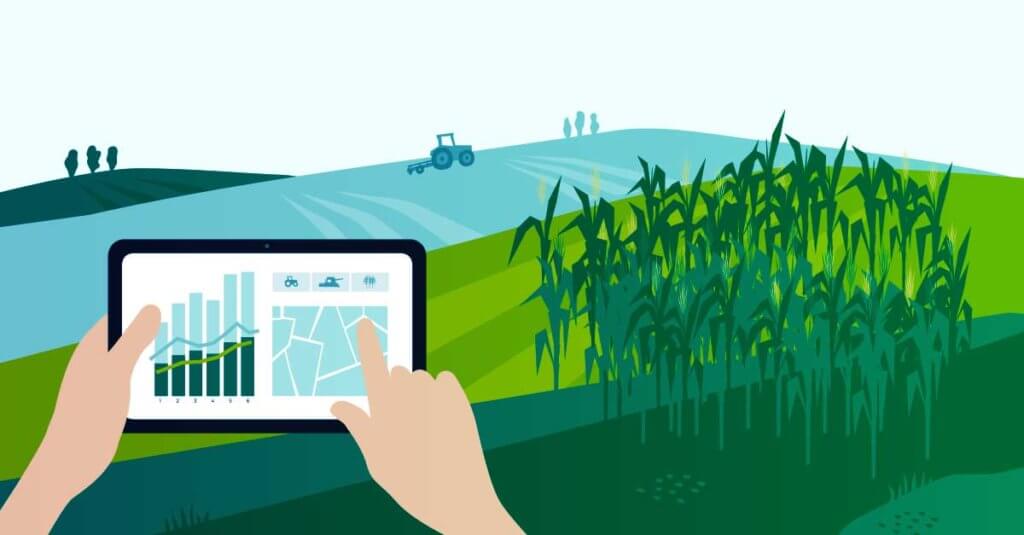
Minnesota farms saw improved profitability in 2020, despite the challenges COVID-19 created. Much of this increased profitability is related to improved commodity prices in the third and fourth quarters of 2020.
Median net farm income for Minnesota farms reached $106,969 in 2020. This was a welcome increase after seven years of low profitability. When adjusted for inflation, 2020 farm profits were above average compared to the historical records tracked by University of Minnesota Extension and the Minnesota State Agricultural Centers of Excellence. Overall, the average Minnesota farm saw improved working capital, positive earned net worth change and improved debt coverage in 2020.
“This past year’s increased profitability has given many a sigh of relief and renewed hope for the future of their farm.”
Pauline Van Nurden – Center for Farm Financial Management (University of Minnesota)
“Minnesota farms have faced many struggles in recent years,” according to Pauline Van Nurden of the University of Minnesota’s Center for Farm Financial Management. “This past year’s increased profitability has given many a sigh of relief and renewed hope for the future of their farm.”
All farm types experienced positive net farm income last year, something not seen since 2014. For much of the year, the pandemic created considerable uncertainty and many challenges for farms and small businesses alike. Without the commodity price improvements and government payments received, Minnesota farms would have experienced an eighth year of low profits.
“Government support payments played a crucial role for our farms during the initial phases of the pandemic,” said Keith Olander of the Minnesota State Northern Agricultural Center of Excellence. “Federal and state programs benefitted farmers and rural small businesses in their time of need.”
Government payments accounted for 12 percent of gross farm income for the average producer last year. Many of these payments were related to the pandemic and disasters from previous years. Market and supply chain disruptions loomed large in April and May, but most farms were able to endure and continue operations.
This analysis includes 2,225 participants in Minnesota State Farm Business Management programs and 105 members of the University’s Southwest Farm Business Management Association. Participating farmers represent approximately 10% of Minnesota’s farms that have gross incomes of more than $250,000 annually.
Crop Farms: Better yields lead to stronger profits
The median income for crop farms was $109,774. This improved profitability was the result of strong yields and improved year-end prices for Minnesota’s major crops. Crop yields were above average for corn, soybeans, and sugarbeets.
“After dealing with prevented plant issues over the last few years, the higher corn and soybean yields were much needed for our southern Minnesota farms,” said Garen Paulson, Extension ag business management educator. Crop prices improved by year-end, but cash sale prices received during the 2020 marketing year were mixed. Cash corn price received was six percent below the previous year at $3.40 and soybean price was six percent better at $8.98.
Crop farms did benefit from government program payments as well. “Many of the government program payments received in 2020 were related to disasters in 2018 and 2019. Other payments were related to low crop prices resulting from COVID during the 2020 marketing year,” said Ron Dvergsten, Farm Business Management instructor at Northland Community and Technical College in Thief River Falls. WHIP+ (Wildfire and Hurricane Indemnity Program Plus) provided crop disaster relief related to the 2018 and 2019 production years. The Market Facilitation Program provided payments to producers of commodities impacted by trade-related losses and the Coronavirus Food Assistance Programs offered support for farm operations experiencing market disruptions related to the pandemic.
Dairy: Continued rebound
The plight of dairy farms has been in the news over the past several years. Prices started to improve in 2019 and that continued into 2020. The median dairy farm earned $173,460 last year, compared to $64,144 in 2019 and $15,907 in 2018. The average milk price, at $19.73 per hundred pounds, was the highest since record prices in 2014. The challenges of COVID led to many supply chain disruptions for all livestock markets in the early months of the pandemic. Government assistance helped stabilize the situation and support farms in their time of need.
“Minnesota dairy farms were able to play catch-up in 2020. Many farms saw accounts payable build and deferred necessary maintenance when prices were depressed. The profits of 2020 allowed those farms to make repairs and pay old bills,” said Nate Converse, Farm Business Management Instructor at the Staples campus of Central Lakes College. Cash expenses for Minnesota dairy farms increased by 9 percent in 2020, indicating dollars spent on deferred repairs and other outstanding bills.
Pork producers: Higher returns but trade issues limit the rebound
Pork producer net earnings continued to rebound with the median producer earning $310,042, up from $96,245 in 2019. Wean-to-finish producers made $13 per head. Again, government payments played a significant role in hog farm profitability last year. Without aid related to trade and pandemic challenges, Minnesota pork producers would have seen profits diminish. The spring of 2020 caused once-in-a-lifetime disruptions for many of the state’s hog producers. With processing plants closed because of COVID, many producers were forced to euthanize hogs. The realities of this caused severe mental health challenges in rural Minnesota. Hog farmers endured, making many difficult management decisions along the way.
Beef producers: Improved returns
Beef producers enjoyed a return to positive net farm income in 2020. Median net farm income for beef producers was $42,850, an improvement over the $4,000 of net profits the prior year. Despite COVID-related challenges, cattle finishers showed almost $35 of net return per head. But a subset of beef farmers, beef calf-cow producers, only broke even. Beef prices improved less than other commodity prices in the state and government support was also received by these farms. Many Minnesota beef operations have additional sources of income, mainly from off-farm sources. This group of producers have the highest levels of nonfarm income in the database at $55,525 in 2020.
Prospects for 2021
USDA forecasts net farm income to decrease 8percent in 2021. Much of this decline is expected because of lower government payments to farmers. Case in point, no farm payments were included in the most recent stimulus legislation, the American Rescue Plan. Improved commodity prices are expected to continue in 2021. But operating expenses will likely trend up, related to higher energy and increased input prices. Livestock producers will likely see profits limited by increased feed prices. As spring nears, many farmers are optimistic for a more “normal” year after the uncertainty and challenges of 2020. But many unknowns remain related to the pandemic and our nation’s economic recovery. Hope springs eternal for the Minnesota farmer though, and plans for 2021 production are well underway.
About the data
The statewide results are compiled by the CFFM into the FINBIN database, which can be queried at www.finbin.umn.edu. FINBIN is one of the largest and most accessible sources of farm financial and production benchmark information in the world. FINBIN places detailed reports on whole farm, crop, and livestock financials at your fingertips. 2020 data will continue to be added this spring from other collaborating states, including Illinois, Michigan, Missouri, Nebraska, North Dakota, Ohio, Pennsylvania, South Carolina, South Dakota, Utah, and Wisconsin.
Pauline Van Nurden joined the FINPACK Team as an Economist in 2017.
Prior to joining the FINPACK Team, she worked as a lender. This provides her valuable industry experience and knowledge in her work with FINPACK. Pauline holds a Master’s Degree in Agricultural Education and Bachelor’s Degree in Applied Economics, both from the University of Minnesota.





